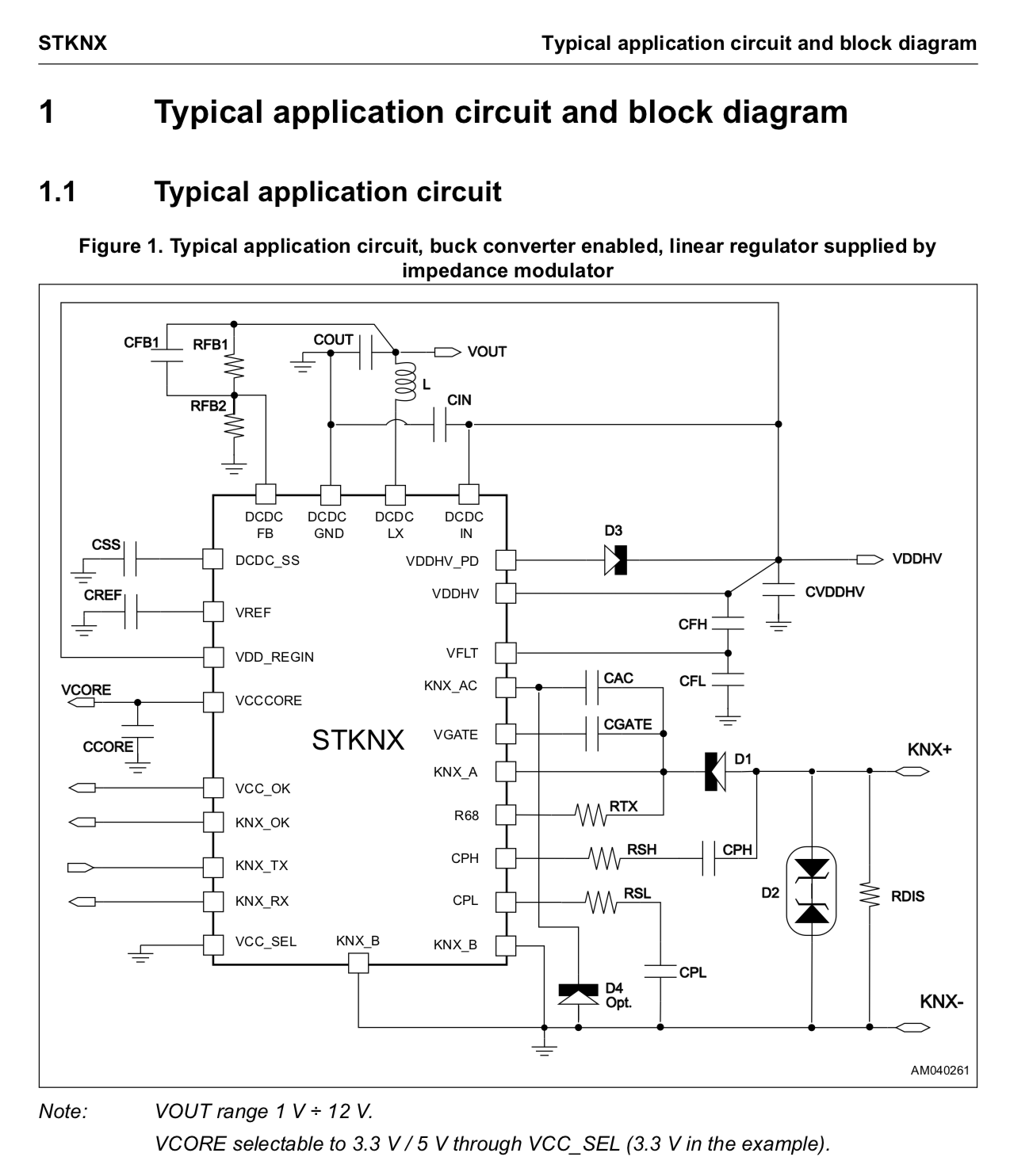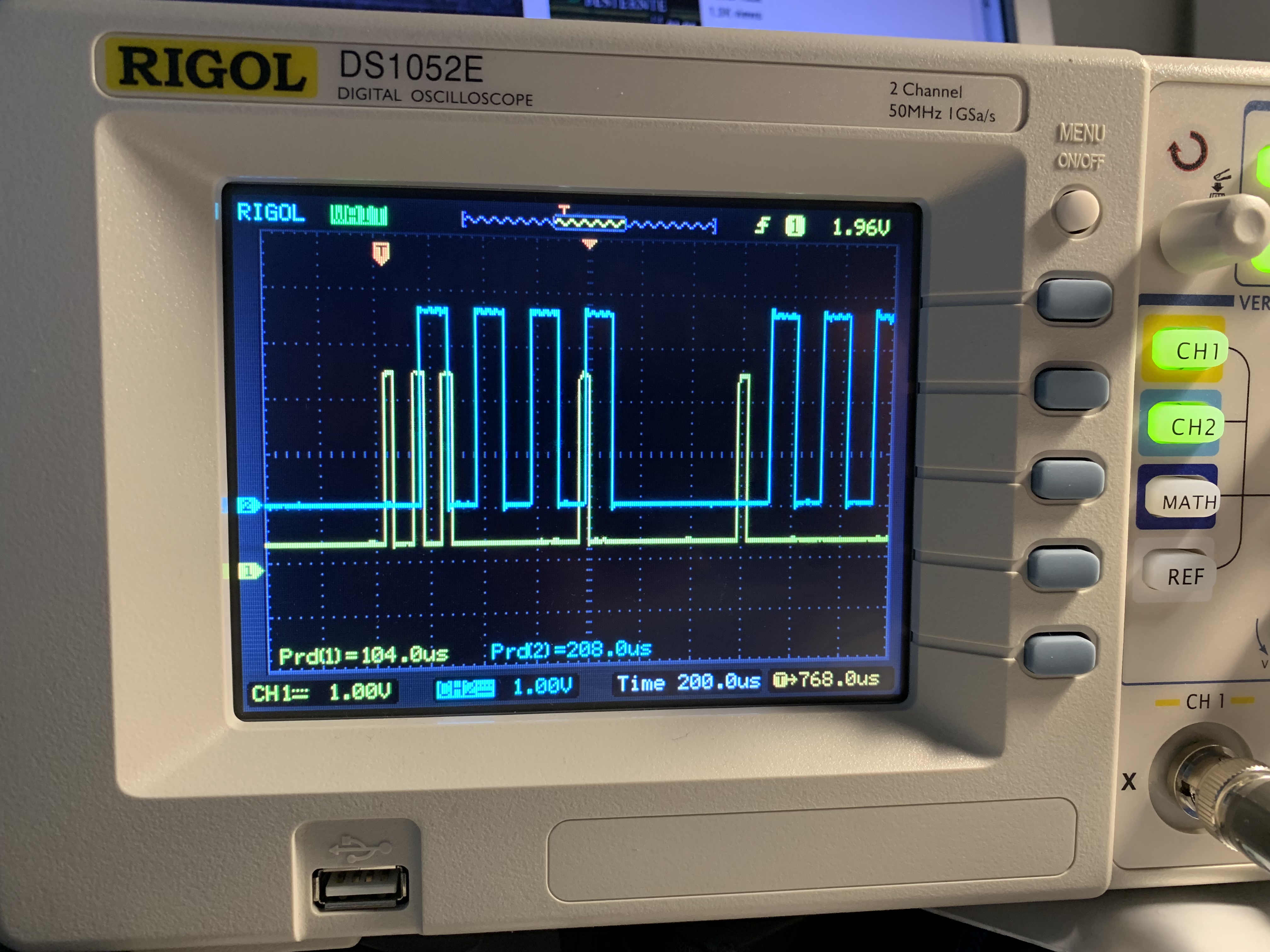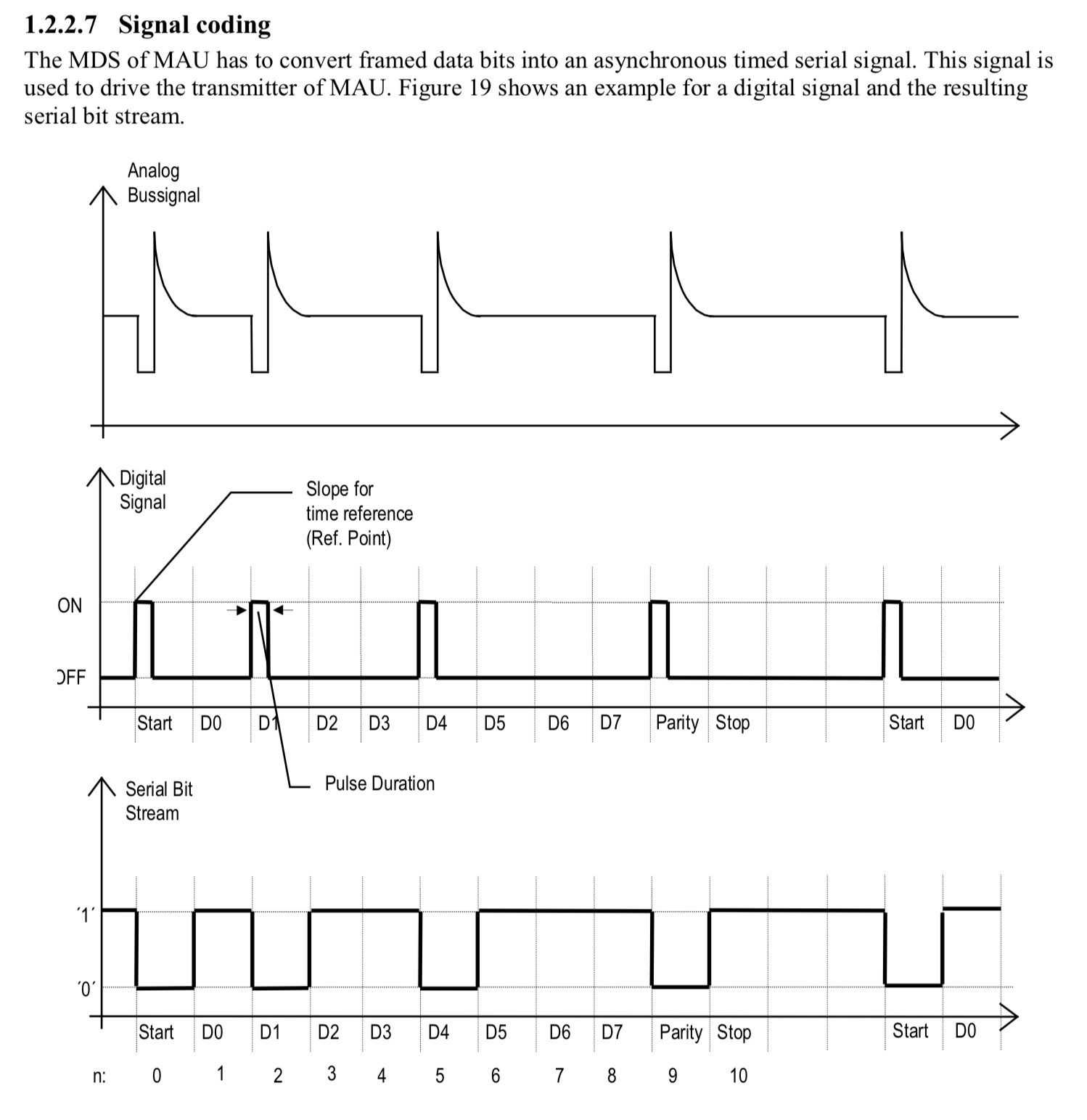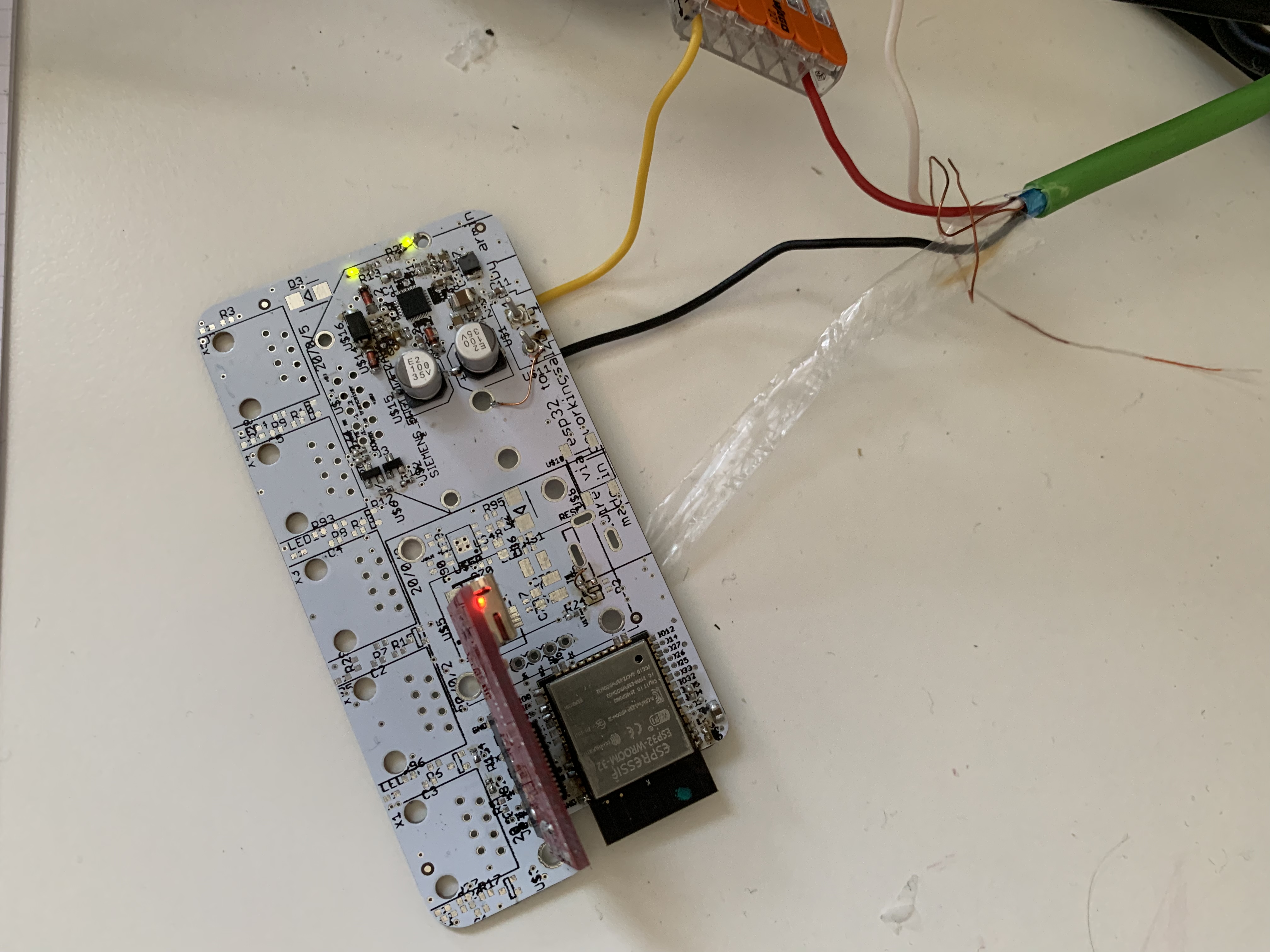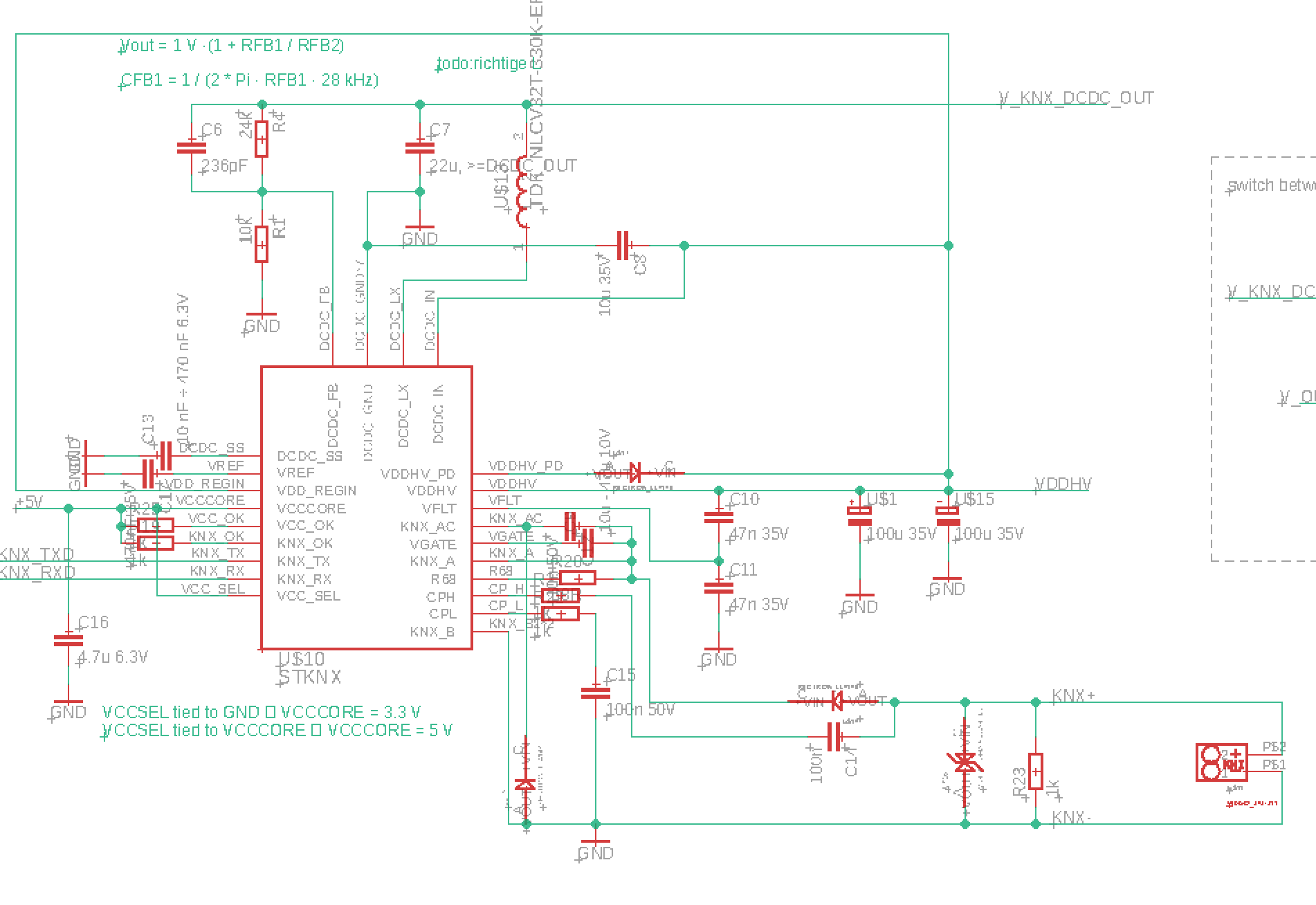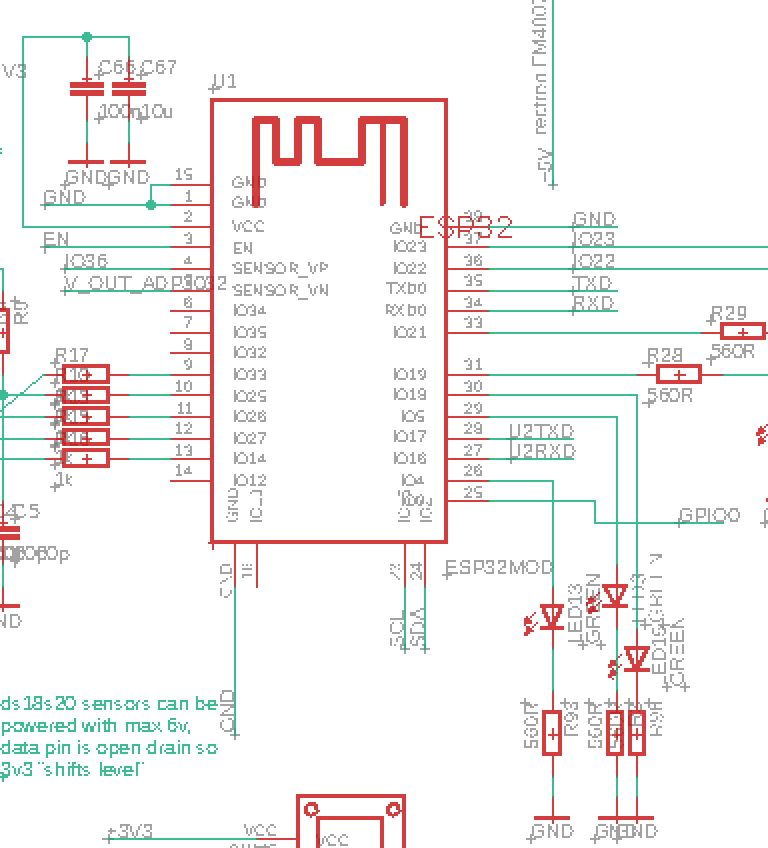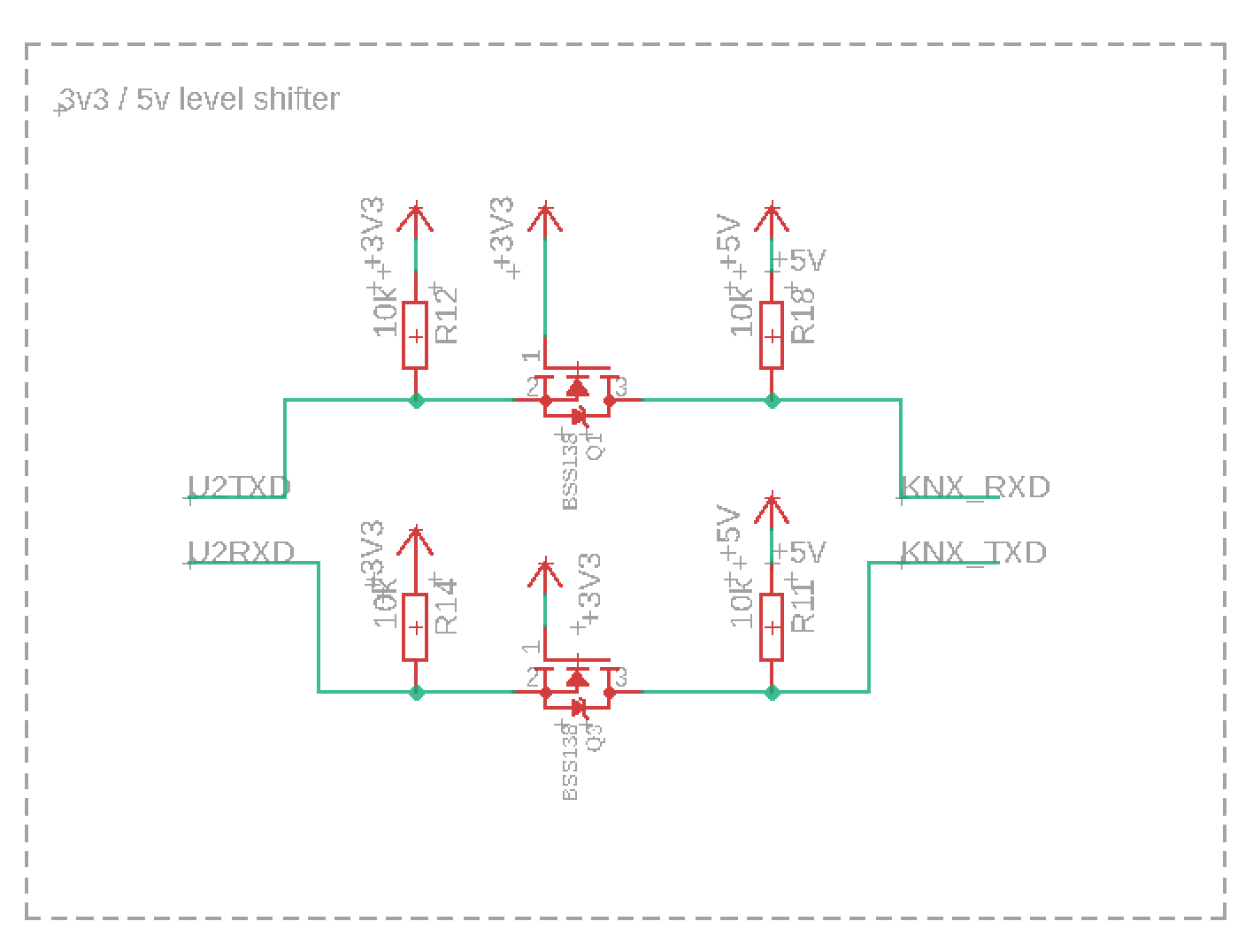Open KNX Lib
Receive Demo
This code demonstrates how to read bytes from STKNX.
STKNX vs TP-UART
STKNX tranceives all bytes read from KNX bus to its KNX_RX pin and has neither built-in buffers nor talks a standard UART as it's competetor TP-UART does.
Features
- Retreive startbit by GPIO interrupt (cpu-friendly)
- Read bits by hardware timer (cpu-friendly)
- minimal ISR for bitbanging knx bits (cpu-friendly).
Typical STKNX application circuit
KNX TP1 frame
KNX TP1 control frame
Here you can see a octet read by stknx: CH1 is data from STKNX, CH2 is generated by software in ISR to demonstrate when bits are read (here: 8 bits, 11bits should be read to read start-, parity- and stopbit as well)
This demo-octed is read as: 11100001000 where
- 1: startbit: OK, this should be 1
- 1: D0 (LSB) (inverted)
- 1: D1 (inverted)
- 0: D2 (inverted)
- 0: D3 (inverted)
- 0: D4 (inverted)
- 0: D5 (inverted)
- 1: D6 (inverted)
- 0: D7 (MSB) (inverted)
- 0: (inverted: 1) even paritybit OK ("ones" in databits(D0-D7): 1+1+1 = 3 -> odd-> 1)
- 0: stopbit: OK, this should be 0
So this octet is read as: 01000011 -> inverted 10111100 -> 0xBC
KNX signal coding
Schematic PDF
STKNX / ESP32 board
Schematic STKNX
Schematic ESP32
Schematic Levelshifter
Requirements
Espressif ESP-IDF framework. No external Libs needed.
Compile
$ makeFlash
$ make flashRun
$ make flash monitorDemo
I (0) cpu_start: Starting scheduler on APP CPU.
I (315) gpio: GPIO[4]| InputEn: 0| OutputEn: 1| OpenDrain: 0| Pullup: 0| Pulldown: 0| Intr:0
I (325) gpio: GPIO[5]| InputEn: 0| OutputEn: 1| OpenDrain: 0| Pullup: 0| Pulldown: 0| Intr:0
I (335) gpio: GPIO[18]| InputEn: 0| OutputEn: 1| OpenDrain: 0| Pullup: 0| Pulldown: 0| Intr:0
I (345) gpio: GPIO[19]| InputEn: 0| OutputEn: 1| OpenDrain: 0| Pullup: 0| Pulldown: 0| Intr:0
I (355) gpio: GPIO[21]| InputEn: 0| OutputEn: 1| OpenDrain: 0| Pullup: 0| Pulldown: 0| Intr:0
I (365) gpio: GPIO[22]| InputEn: 0| OutputEn: 1| OpenDrain: 0| Pullup: 0| Pulldown: 0| Intr:0
I (375) gpio: GPIO[23]| InputEn: 0| OutputEn: 1| OpenDrain: 0| Pullup: 0| Pulldown: 0| Intr:0
I (1355) gpio: GPIO[17]| InputEn: 1| OutputEn: 0| OpenDrain: 0| Pullup: 1| Pulldown: 1| Intr:1
waiting for KNX frames ...
KNX TP1 FRAME: [R:1 Prio:3 1/2/3 5/9/1 routing:6 len:1 chk:0xCC]
KNX TP1 FRAME: [R:1 Prio:3 15/15/254 5/8/1 routing:6 len:1 chk:0xCC]
KNX TP1 FRAME: [R:1 Prio:3 1/2/3 5/9/1 routing:6 len:1 chk:0x60]
KNX TP1 FRAME: [R:1 Prio:3 15/15/254 5/8/1 routing:6 len:1 chk:0x60]
KNX TP1 FRAME: [R:1 Prio:3 1/2/3 5/9/1 routing:6 len:1 chk:0x00]
KNX TP1 FRAME: [R:1 Prio:3 15/15/254 5/8/1 routing:6 len:1 chk:0xCC]
KNX TP1 FRAME: [R:1 Prio:3 1/2/3 5/9/1 routing:6 len:1 chk:0x00]
KNX TP1 FRAME: [R:1 Prio:3 15/15/254 5/8/1 routing:6 len:1 chk:0x00]
KNX TP1 FRAME: [R:1 Prio:3 1/2/3 5/9/1 routing:6 len:1 chk:0xCC]
KNX TP1 FRAME: [R:1 Prio:3 15/15/254 5/8/1 routing:6 len:1 chk:0xCC]
KNX TP1 FRAME: [R:1 Prio:3 1/2/3 5/9/1 routing:6 len:1 chk:0x00]
KNX TP1 FRAME: [R:1 Prio:3 15/15/254 5/8/1 routing:6 len:1 chk:0xCC]
KNX TP1 FRAME: [R:1 Prio:3 1/2/3 5/9/1 routing:6 len:1 chk:0xCC]
KNX TP1 FRAME: [R:1 Prio:3 15/15/254 5/8/1 routing:6 len:1 chk:0x00]
[...]Credits
Special Thanks to Philipp Aigner and Franz Augernigg
License
MIT
